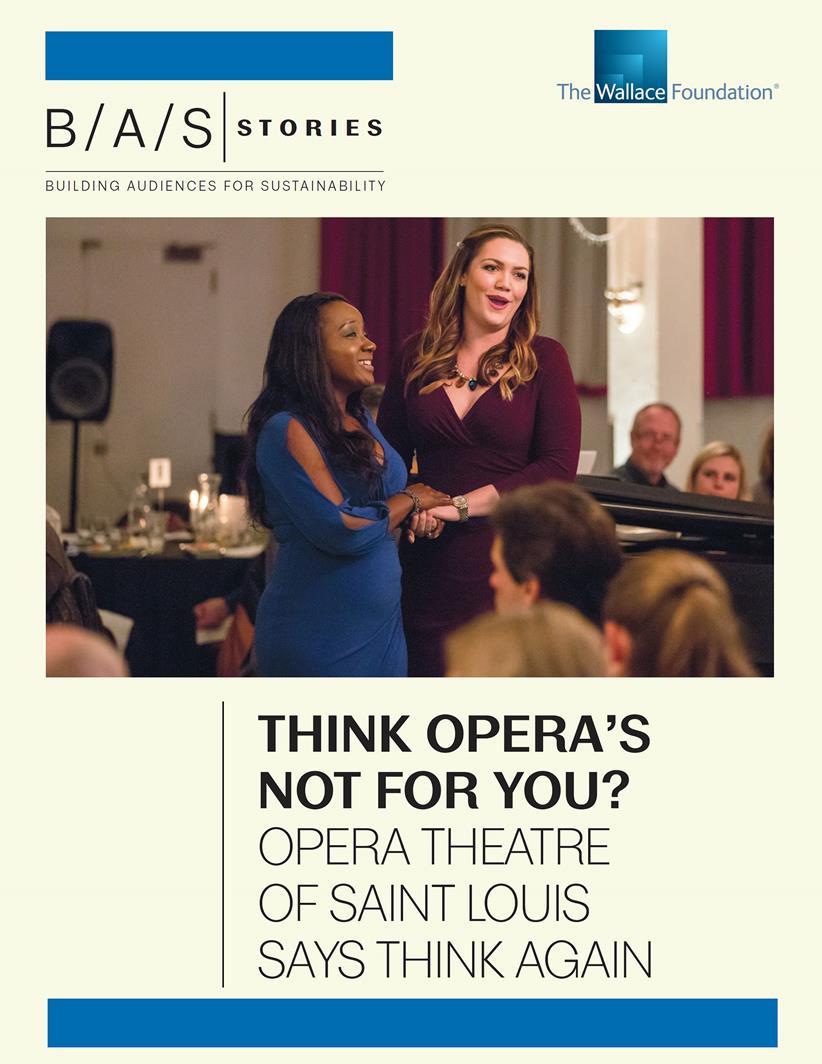OTSL Dives into Data

Sometimes cold, hard evidence trumps even the best intuitive thinking. Opera Theatre of Saint Louis had a “leaky bucket” problem: New audience members weren’t coming in at a rate sufficient to counteract the waning number of older attendees. It instituted a number of initiatives aimed at younger potential audience members, including a Young Friends program offering discount tickets and social events for people under 45.
Enter the Wallace Foundation’s Building Audiences for Sustainability (BAS) program, launched in 2015. The program distributed funding to a total of 26 organizations — theater companies, dance troupes and orchestras, as well as opera institutions — for the purpose of studying ways in which the performing arts can encourage healthy audience growth. At OTSL, a BAS grant subsidized programs like Young Friends and helped launch Opera Tastings, a series of low-priced evenings of drinks, dinner and opera in neighborhood venues. Perhaps the most significant element of funding, though, was the support it provided for audience research. These studies let the company see how well its seat-of-the-pants instincts conformed to actual market results.
Few opera companies make this kind of effort. “Opera companies put millions of dollars into marketing, and almost nothing into research,” notes OPERA America’s president/CEO, Marc A. Scorca. “That lack of investment is staggering.”
OTSL’s market research, as detailed in a Wallace Foundation report, “Think Opera’s Not for You?,” offered up some true surprises, not all of them pleasant. Opera Tastings has, in fact, found some success in cultivating new audiences and in re-engaging former OTSL-goers. Forty-two percent of attendees at these events went on to purchase mainstage tickets. But Young Friends hasn’t been as popular with Millennials as had been hoped: The program’s socializing opportunities have had limited appeal; another disincentive has been the program’s policy of waiting until the day before the performance to offer seat assignments.
“The Wallace work has helped us make an investment in data that previously was not possible,” says Andrew Jorgensen, OTSL’s general director. “It has told us not to be afraid of making choices: Sometimes there are good ideas and you have to let them go.”
One unexpected finding: Even though intuition might suggest that new works with political themes, like last summer’s Huang Ruo/David Henry Hwang opera An American Soldier, would have a special appeal for younger audiences, this age group is actually more drawn to warhorses like La traviata. The discovery is not going to change OTSL’s historic commitment to new works: Jorgensen notes that 2013’s Champion, “the most successful Opera Theatre production in the last decade,” would never have come to fruition if marketing data had been the only criterion for its production. “The data would have told you it’s a terrible idea,” he says.
“There is a magical alchemy to artistic planning that needs to persist,” Jorgensen says. “How we take those products to market, how we plan engagement — that’s the area where there’s an enormous opportunity to continue to be data-driven.”
This article was published in the Spring 2019 issue of Opera America Magazine.

Fred Cohn
Fred Cohn is the former editor of Opera America Magazine.




